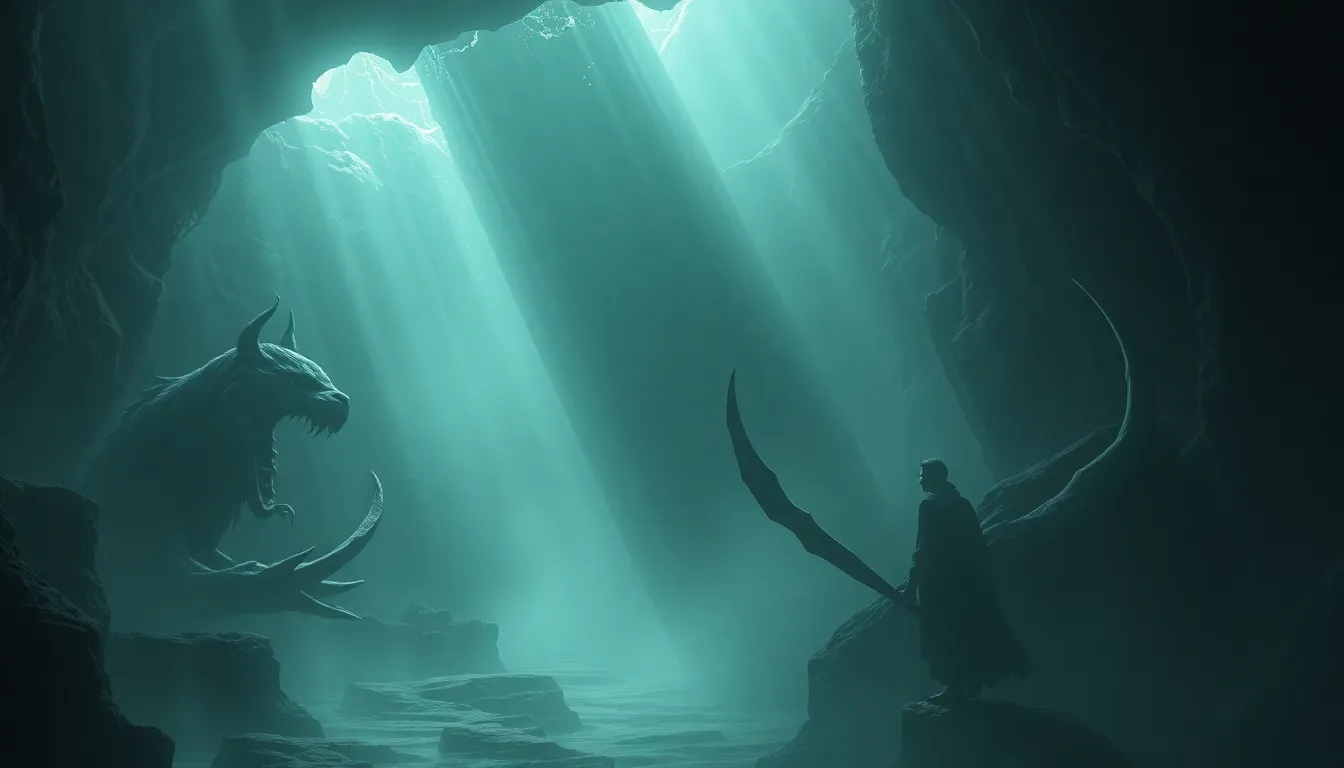Legends of the Underworld: The Myths That Define Our Afterlife
I. Introduction: The Allure of the Underworld
The concept of the afterlife has captivated human imagination across cultures for millennia. The allure of what lies beyond death raises profound questions about existence, morality, and the human condition. Each civilization has crafted its narratives and legends surrounding death, creating rich tapestries of belief that both comfort and terrify.
Myths serve a critical role in shaping our beliefs about death and the afterlife. They provide frameworks for understanding what happens when we die, guiding the living in their moral and ethical decisions. These stories often reflect the values and fears of their respective cultures, making them not just tales of the past, but essential elements of human experience.
II. Ancient Civilizations and Their Underworlds
A. The Mesopotamian Afterlife: The Realm of Irkalla
In ancient Mesopotamia, the afterlife was perceived as a grim place known as Irkalla. This underworld was ruled by the goddess Ereshkigal and characterized by a stark existence devoid of joy. The dead were thought to journey to Irkalla, where they faced a shadowy existence, reflecting the harsh realities of life on Earth.
B. The Egyptian Duat: The Journey of the Soul
In stark contrast, the ancient Egyptians envisioned a complex afterlife journey through the Duat. This realm was filled with trials, where the soul navigated obstacles and faced judgment before Osiris, the god of the afterlife. Successful passage led to eternal life in the Field of Reeds, a paradise reflecting the idealized version of life on Earth.
C. Greek Hades: The Land of the Dead and Its Judges
The Greeks offered a nuanced view of the afterlife through Hades, where souls were judged by three judges: Minos, Rhadamanthus, and Aeacus. Depending on their earthly deeds, souls were sent to different realms within Hades, such as Elysium for the virtuous or Tartarus for the wicked, illustrating the moral consequences of one’s actions.
III. Underworlds in Eastern Mythologies
A. The Hindu Naraka: Karma and Rebirth
In Hinduism, the concept of Naraka represents a temporary hell where souls undergo punishment for their earthly sins. This state is not permanent; rather, it serves as a necessary step before reincarnation, emphasizing the cyclical nature of life, death, and rebirth influenced by karma.
B. The Buddhist Naraka: Temporary Suffering and Enlightenment
Similar to Hindu beliefs, Buddhism presents Naraka as a realm of temporary suffering, where beings experience the results of their negative karma. However, unlike Hinduism, the ultimate goal in Buddhism is enlightenment, transcending the cycle of rebirth altogether.
C. Chinese Underworld: The Ten Kings and the Cycle of Life
The Chinese underworld, ruled by the Ten Kings, features a system of judgment that assesses the deeds of the deceased. Souls are guided through various trials and punishments based on their actions in life, ultimately leading to reincarnation, reflecting the cyclical beliefs inherent in Chinese spirituality.
IV. Norse Mythology: Hel and Valhalla
A. The duality of life after death in Norse beliefs
Norse mythology presents a duality in the afterlife, where warriors could ascend to Valhalla, a hall of glory, while others might end up in Hel, a realm ruled by the goddess of the same name. This bifurcation reflects the value placed on bravery and honor in Viking culture.
B. The role of Valkyries and the paths to Valhalla
Valkyries play a crucial role in guiding the souls of fallen warriors to Valhalla, highlighting the honor associated with dying in battle. This belief system emphasizes valor and the warrior ethos, creating a narrative that glorifies death in combat.
V. The Underworld in Indigenous Mythologies
A. The Native American views on the spirit world
Indigenous cultures in North America possess diverse beliefs about the spirit world. The afterlife is often seen as a continuation of the earthly existence, where ancestors guide the living through dreams and spiritual practices.
B. The role of ancestors in guiding the living
In many Native American traditions, ancestors play a significant role in the lives of the living. They are believed to provide wisdom and protection, reinforcing the idea that death is not an end but a transition into a different realm of existence.
C. The Dreamtime in Australian Aboriginal culture
Australian Aboriginal culture introduces the concept of the Dreamtime, a spiritual belief system that encompasses creation, existence, and the afterlife. The Dreamtime intertwines the past, present, and future, illustrating a unique understanding of life and death.
VI. Modern Interpretations of the Underworld
A. The influence of mythology on contemporary literature and film
Modern literature and film frequently revisit ancient myths, interpreting them within contemporary contexts. From Dante’s “Inferno” to films like “The Matrix,” the underworld is a recurring theme that explores existential questions and the human experience.
B. The reinterpretation of ancient myths in modern spirituality
Many modern spiritual movements draw inspiration from ancient myths, adapting them to fit contemporary beliefs about the afterlife. This reinterpretation allows individuals to find personal meaning in age-old narratives, bridging the gap between history and modernity.
VII. The Psychological Implications of Underworld Myths
A. Fear of death and the comfort of belief systems
Underworld myths often provide comfort in the face of death. They alleviate the fear of the unknown, offering structured narratives that help individuals cope with mortality. These beliefs can foster a sense of peace, knowing there is a path after life.
B. The role of myths in coping with loss and grief
Myths serve as tools for navigating the complex emotions of loss and grief. They provide frameworks for understanding the death of loved ones, facilitating healing processes through shared cultural narratives.
VIII. Comparative Analysis: Common Themes in Underworld Myths
A. The journey of the soul and trials faced
Across cultures, the journey of the soul is a common theme, often involving trials and tribulations that reflect moral lessons. This journey serves as a metaphor for personal growth and the consequences of one’s actions.
B. Concepts of judgment and moral consequence
Many underworld myths incorporate judgment, where the deceased face evaluations of their lives. This theme emphasizes the importance of moral behavior and personal accountability.
C. Symbolism of light and darkness in afterlife narratives
The symbolism of light and darkness frequently appears in underworld myths, representing the struggle between good and evil, knowledge and ignorance, life and death. This duality enriches the narratives surrounding the afterlife.
IX. The Future of Underworld Legends in a Scientific World
A. The clash between mythology and scientific understanding of death
In a world increasingly dominated by scientific understanding, the clash between mythology and empirical evidence raises interesting questions about belief. While science provides explanations for death, myths offer comfort and meaning that science often cannot.
B. The enduring power of myth in human culture
Despite advancements in science, the power of myth endures. These stories continue to resonate with people, providing frameworks for understanding the complexities of life and death, shaping human experience in profound ways.
X. Conclusion: The Legacy of Underworld Myths
A. The importance of understanding these legends in a global context
Understanding the legends of the underworld is crucial in a global context, as these stories reflect the diverse ways cultures grapple with the concept of death. They reveal shared human experiences and values that transcend geographical boundaries.
B. How myths of the afterlife continue to shape human experience and belief today
Myths of the afterlife remain a vital part of human culture, influencing modern spirituality, literature, and personal beliefs. They remind us that the quest for understanding what comes after death is a fundamental aspect of the human experience, one that continues to evolve and resonate with each generation.



